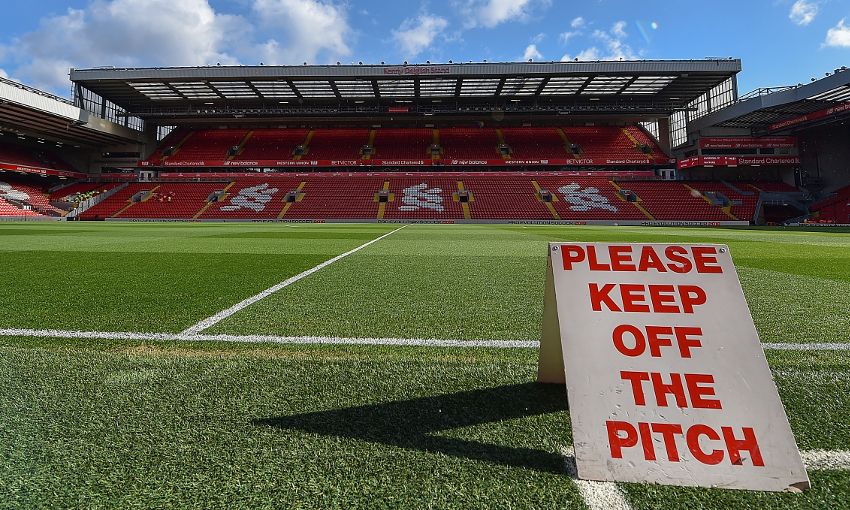Explained: How the Anfield pitch remains pristine
Ever wondered about the science behind preparing and maintaining the Anfield pitch over the course of a season packed with Premier League and Champions League football?
For David Roberts, it’s the day – and, often, night – job.
The LFC grounds manager will oversee the 28th and final home match of the 2017-18 season on Sunday afternoon, when the Reds host Brighton and Hove Albion in a crucial game in the top-four race.
Before then, he spared five minutes to tell BBC Radio 2 all about the maintenance of Anfield’s famous turf, the scale of work put into it, and the importance of the three per cent that isn’t grass…
What time do you normally clock on?
We normally start about eight o’clock. Depending on if we’ve got games, it can go through until quite late in the evening.
What is the earliest you’ve arrived at Anfield and the latest you’ve left?
I’ve arrived at about 7.30am. The latest is probably about 1.30am or 2am in the morning; [that’s for] Champions League games in the middle of the winter. We’ve got to de-rig everything. We’ve got to get straight onto the pitch afterwards to get everything put back right. We have light rigs that we put on the pitch to help the grass grow through the winter. They all have to go on. That can be a long, slow one.
What involvement does the manager have with the pitch? Because you can make the most of the home advantage…
To a point. There is a set of rules. You can’t doctor pitches but you can tweak them a little bit. But, to be honest, most teams that like to play passing football all want the same thing: the grass relatively short and wet so the ball zips around on the surface.
Tell us about the hybrid pitch at Anfield…
We are 97 per cent natural grass and three per cent fibre. That makes a huge difference. Football is a winter sport so we’re dealing with the worst of the weather and being in the UK, predominantly the worst of the weather is going to be rain. So to make sure the pitch is drained freely, you build your pitch out of sand. Sand is not stable so to give stability you rely on grass roots and when they fail, you need the fibre that’s stitched in there. There’s a machine that basically stitches these fibres in; they go down 20cm deep into the pitch and they’re 2cm apart. An interesting fact is that if you were to take all of the fibres out of the pitch and stretch them end-to-end, they would wrap around the circumference of the planet.



